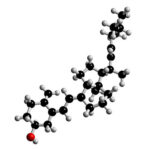 Researchers in Georgia and Massachusetts measured the vitamin D status of black and white adolescents in the southeastern United States and the relationship with adiposity.
Researchers in Georgia and Massachusetts measured the vitamin D status of black and white adolescents in the southeastern United States and the relationship with adiposity.
First, the details.
- Blood levels of 25-hydroxyvitamin D were measured in 559 adolescents.
- Fat tissues, physical activity, and cardiovascular fitness were also measured.
And, the results.
- The overall prevalences of vitamin D insufficiency (less than 75 nmol/L) and deficiency (less than 51 nmol/L) were 56% and 29%, respectively.
- Blacks had significantly lower vitamin D levels in every season vs whites.
- After adjusting for age, gender, race, season, height, and sexual maturation, there were significantly lower levels of vitamin D vs all adiposity measurements (BMI percentile, waist circumference, total fat mass, percentage of body fat, visceral adipose tissue, and subcutaneous abdominal adipose tissue).
- There were significant positive associations between higher vitamin D levels and greater vigorous physical activity and cardiovascular fitness.
The bottom line?
The authors concluded, “Low vitamin D status is prevalent among adolescents living in a year-round sunny climate, particularly among black youths.”
But most interesting to me is the association between lower vitamin D levels and less vigorous physical activity and cardiovascular fitness.
The authors tell us that based on approximately a decade of NHANES (National Health and Nutrition Examination Survey) data, the prevalence of vitamin D deficiency in adolescents increased from 28% to 48% and that of vitamin D insufficiency increased from 66% to 81%.
Vitamin D deficiency wasn’t a big problem when I was in my teens. But then, I spent my summers in the park in supervised activities and 3 times a day soft ball games. This “new” deficiency, as covered here, appears to parallel changes in a preference for leisure time activities over the past 10 to 15 years.
5/9/10 20:04 JR